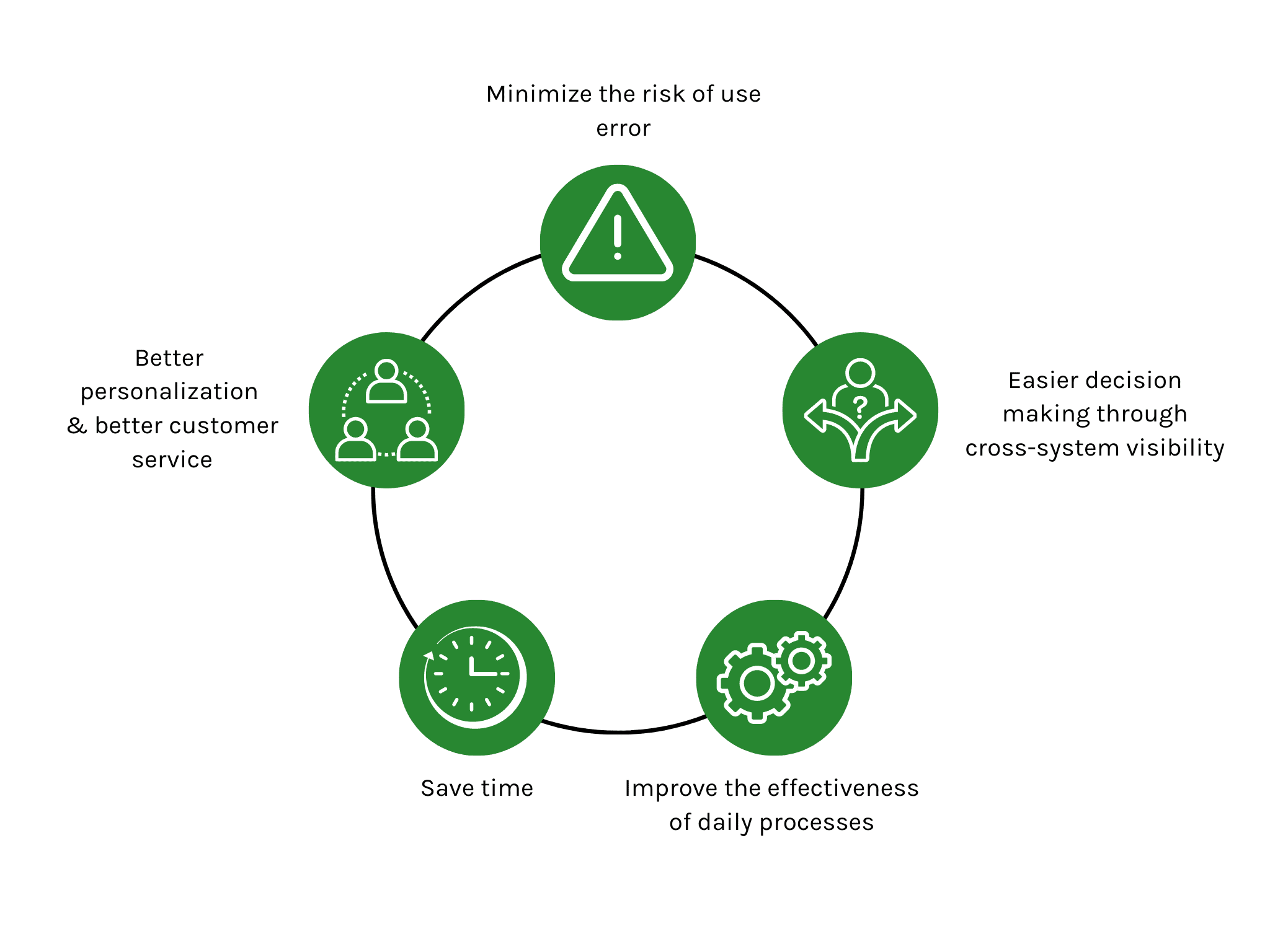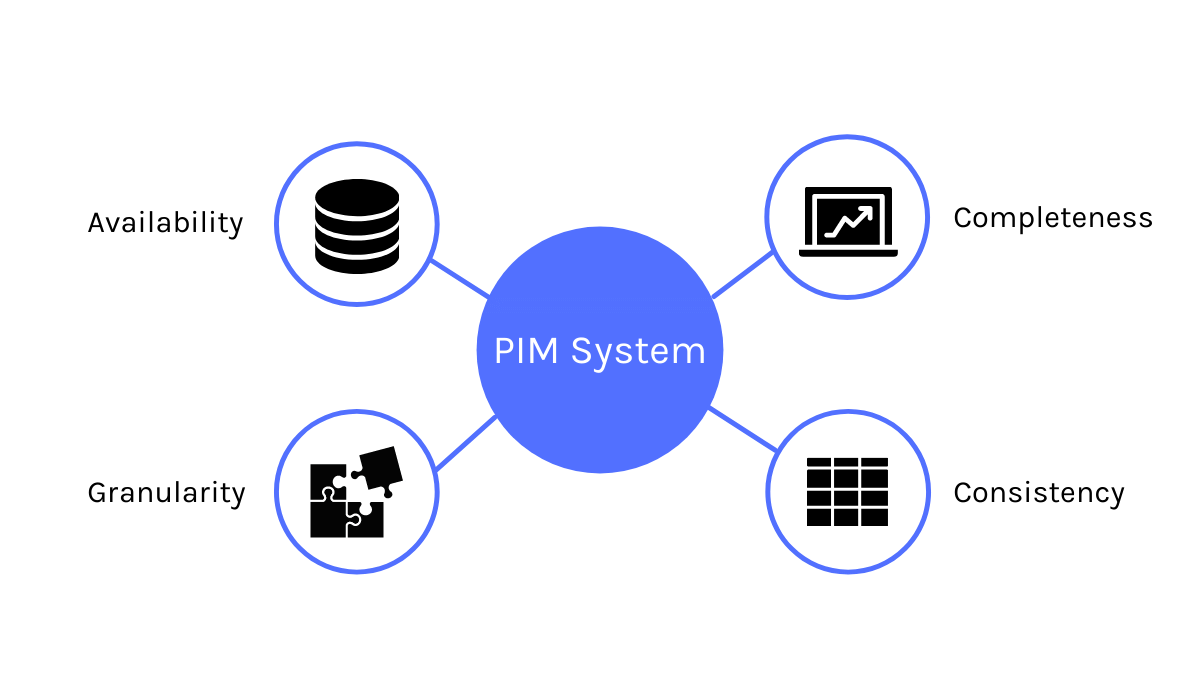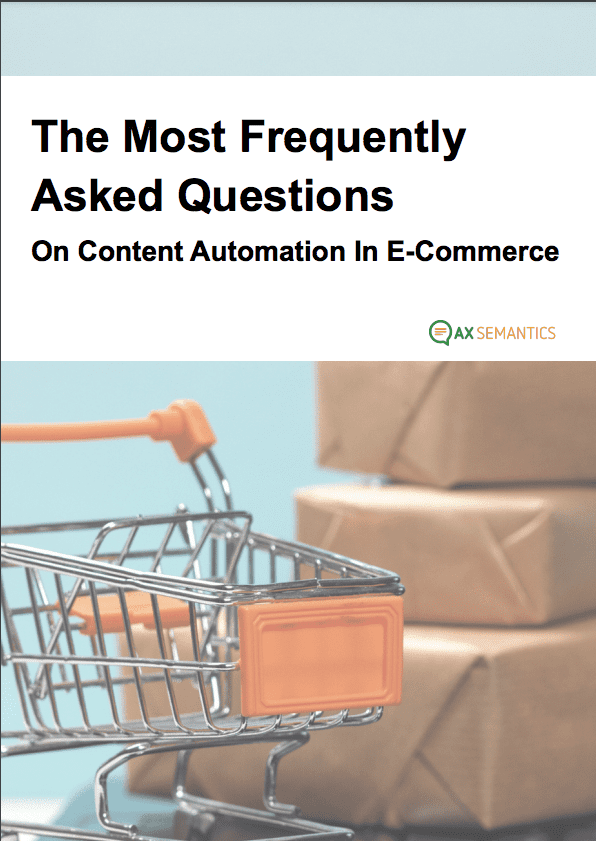As online commerce continues to evolve, it's important for businesses to keep up with changing trends. One of the most significant changes in recent years has been the increased use of technology and automation systems to make operations more efficient and cost-effective. A prime example of this type of system is the product information management (PIM). It provides companies with a comprehensive solution for managing product information from various sources in one central location.
Find out below how your business can benefit from implementing a PIM system with all its features and what exactly the integration of an effective PIM system means for the success of your business. After all, setting up a suitable PIM brings many benefits for companies of all sizes. These include time savings in data entry, improved customer service, optimized purchasing processes, etc.
Table of Contents
PIM is the abbreviation for product information management. This is a software that enables companies to manage their product information resp. product data centrally and efficiently. This is important because, in the course of digitalization, the amount of data held by companies is growing enormously. At the same time, the importance of correct and well-maintained data for the overall success of the company is increasing.
A PIM system is the best solution for companies to manage data and to use it in a forward-thinking and goal-oriented manner. In the PIM, data is managed, enriched or changed centrally. In this way, it technically ensures the basic data quality and structure, for example by defining default values and mandatory fields. In addition, central data management enables the bundled product information to be distributed into various channels and thus used strategically. This, for example, enables products to be marketed more quickly.
To be successful in e-commerce, structured data and its reliable management are essential for companies. The PIM reliably and centrally manages all product information such as characteristics (size, color, material, etc.), images and videos as well as product descriptions.
Basically, PIM systems improve data quality and data accuracy, which in turn has a positive effect on all subsequent business processes in the company. This is because a PIM provides structured and complete data that serves as the basis for far-reaching optimizations. Up-to-date and accurate data makes it easier for companies to provide their customers with the right information for a purchase decision. If customers have access to accurate and up-to-date information about products, this builds trust and loyalty.

By implementing a PIM, companies accelerate the time-to-market of their products and save valuable resources, because manual data entry pools a lot of time and manpower. By connecting the PIM system to existing database systems, the effort required for manual input is minimized or even eliminated.
The automation of repetitive tasks relieves employees. They now have more time for strategic and content-related tasks. Central management enables all team members to access relevant data or modify it if necessary. As a result, employees are able to make informed decisions more effectively and faster, which saves time and money. Customer support, for example, benefits because employees access information quickly, improving customer service. The company's own marketing department uses the data for content creation.
A PIM is useful for publishing product data in multiple channels and systems. In doing so, the PIM is a much more efficient method than manually entering the data (for example, in Excel spreadsheets) and minimizes the risk of application errors. The system helps to meet compliance guidelines and ensures that data is output to the right channels. The ability to create many interfaces to a PIM and output data to different channels also makes it easier for companies to internationalize their business and exchange data securely with business partners.
The most important advantages of PIM systems in companies at a glance:
Once a company has decided on a suitable PIM system, this also paves the way for automated content creation. Because data is the basis for Natural Language Generation (NLG) tools, in particular data-to-text. For example, this means that creating product descriptions can now be done not only automatically, but also scalable.
The more comprehensive and complete a data set is maintained, the better product descriptions data-to-text systems like AX Semantics can generate. This is because NLG text generation can only be as good and correct as the data entered dictates. If the data is incomplete or incorrect, the texts also have a correspondingly inferior quality.
Therefore, when automating content such as product descriptions, there are a few things to keep in mind.

In order to be able to automatically create text from product data, such as product descriptions, the data must be: 1. complete, 2. available, 3. granular, and 4. consistent.
In automated content generation, it is essential to ensure that the necessary data or product attributes are complete. It is not necessary to list every aspect of a product, but it is crucial to name the attributes that are relevant for adding text and to design a corresponding structure system. This structural system can then be transferred into a data model within a PIM system.
On the surface, the data source does not play a major role for content generation with an NLG system. It is irrelevant whether the structured data is read from a table or communicated directly with corresponding source systems via REST API. However, it is necessary to identify a leading data source in a fully automated workflow that provides the product data. Usually, this is the PIM system, which is connected via Connector, for example.
Granularity describes that the available attributes are recorded as separately as possible from each other. This requirement is not only relevant for the automation of product descriptions, but it also contributes to an improvement of product search. If the product data is not sufficiently granular, it can be divided and structured in an intermediate step, which then makes the product data usable for the automation process.
The fourth important point is the consistency of the maintained product data. Different spellings of the same characteristic values make it more difficult to create training courses, as these errors have to be intercepted and corrected by the NLG software. Prospectively, consistent notation of characteristic values can be ensured, for example, through default values for individual data fields. The optimization of already existing product data also poses a challenge.
Want to know more details about the importance of data for automated product descriptions? Then check out this whitepaper.
NLG platforms automatically create high-quality natural language texts based on data. In times of omnichannel and personalization, unique texts are of enormous importance. It is also of significance that they can be adapted and converted into new unique content in a simple and efficient way at the slightest change in the data.
Natural Language Generation, or rather data-to-text, as an interface between humans and machines is based on a defined set of rules and variances for automatically generated texts. These texts can thus no longer be distinguished from texts written by humans.
The advantages of content automation are obvious, because it is a challenge for companies to manage the required large amount of texts and at the same time keep them up-to-date - and all this within a financially justifiable framework.
High-quality product descriptions bring online stores the following advantages, for example:

Download our free white paper that answers frequently asked questions around content automation and the AX software.
There are several providers of product information management systems on the market. Many of them already offer the possibility to connect to an NLG system to create automatically generated texts. In the following, we name some of them as examples:
Contentserv offers a product experience platform that covers the broad spectrum — from Product Information Management (PIM) and Digital Asset Management (DAM) to Master Data Management (MDM) and Marketing Experience Management (MXM). Different data management technologies are thus combined in a single platform to centrally control the entire product experience for the customer. The platform enables the collection of supplier data and its enrichment with high-quality content. The
connection of the Contentserv PIM with the NLG software via Connector for the automated creation of high-quality and unique product texts was described in detail in the previous chapter.
novomind is a digital company working in the fields of commerce and customer service and develops software to improve digital processes for retailers and the customer service behind them. The company thinks of commerce in terms of omnichannel and therefore takes into account all the different requirements of the various receiver channels. NLG also plays a role in this and the automated texts to be generated according to the requirements depending on the target channel. The PIM system serves as a basic module including all necessary functions. It offers a workflow-driven data refinement for all sales channels and communication channels and thus serves as a database for all information required for the automated generation of texts.
Syndigo is the first Active Content Engine built to power modern commerce by enabling the continual flow of data and content throughout the entire commerce ecosystem. We deliver accurate information thanks to industry-leading data management, syndication and analytics, and work with the largest two-sided content distribution network. Syndigo serves more than 12,000 manufacturers, and 1,750 retailers and distributors globally across a wide range of key industries. From vendor portal to MDM/PIM capabilities, through GDSN to product content creation, global syndication, and digital shelf analytics, we enable control and consistency for data governance.
The functions and advantages of PIM systems vary depending on the provider and industry. PIM systems are particularly relevant for companies that have an extensive product range and a lot of product data - regardless of the size of the company. This also applies to manufacturers and retailers who work with different sales channels, sell internationally or frequently adapt product data.
Some PIM providers are geared more towards smaller companies, others address the big players. The PIM system's features determine whether it is better suited for SMEs or global corporations. For example, users voted for Plytix as the world's best PIM system for SMEs on the G2 review platform. Other providers, such as Pimcore, also serve many large corporations with international operations.
When choosing a PIM provider, companies are spoiled for choice. Nearly 90 PIM providers exist - and for the layman, they differ only in degree. So it's no wonder that there are platforms that provide companies with advice on selecting the right PIM system. They help companies to find the right PIM system for their specific needs. Often that includes a multi-stage selection process including a questionnaire and a consultation. One example for this is pim-selection.com.
Our experts will answer any questions you may have about our software, your potential use case, etc.
Product data is the decisive factor in e-commerce. Only those who have sufficient and high-quality data can market products successfully. If poor data quality only becomes visible in the sales channels, it is difficult and time-consuming to improve it afterwards. To remain competitive, it is therefore crucial to understand the scope of product data along the entire value chain. In this context, the importance of a central data management system, in which all the players involved can work, becomes clear.
The product information management serves the purpose of identifying potential in data and deriving added value for customers. Only by interpreting and classifying the data can customer-oriented communication take place and product descriptions be created that are enriched with additional information beyond the basic product data. Customer relationship management offers excellent starting points for designing product descriptions individually for each customer and thus creating a personalized customer approach. This offers great potential in marketing automation, for example.
By generating automated texts, companies save costs and time in many areas. This means that employees can use the freed-up time optimally for other tasks. This is of immense importance, especially in an age when ever greater volumes of data need to be created, collected and kept up-to-date. Keeping pace is extremely important for companies across all industries in order to keep pace and to remain competitive.